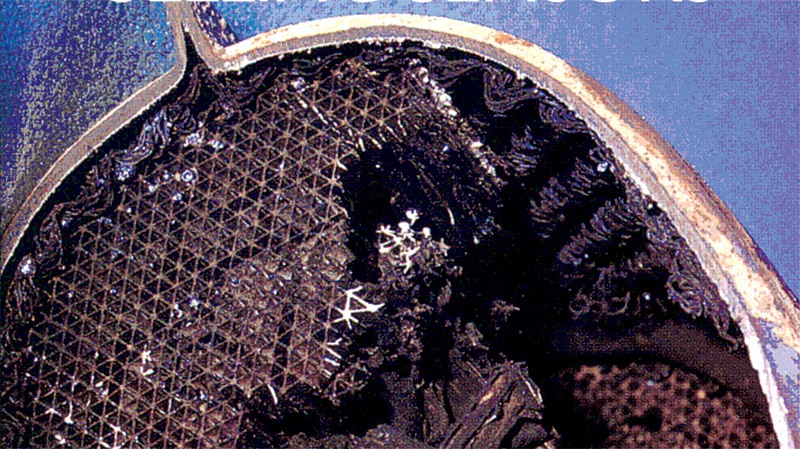Cat meltdown is a rare occurrence on late models, but we’ve seen it happen on older cars. Chances are a sluggish oxygen sensor is the main culprit.
 All of us in auto service know that the mixture monitor enables the engine management computer to maintain stoichiometry. That not only reduces fuel consumption and combats air pollution directly, it also allows the three-way cat to do its job of reducing NOx to harmless nitrogen and oxygen.
All of us in auto service know that the mixture monitor enables the engine management computer to maintain stoichiometry. That not only reduces fuel consumption and combats air pollution directly, it also allows the three-way cat to do its job of reducing NOx to harmless nitrogen and oxygen.
Fine, but your average customer hasn’t got a clue about the whole situation. When you tell him he needs a new O2 sensor, you get a blank stare. If his catalyst has entered melt-down and you suggest that the oxygen sensor was probably the cause, he might suspect that you’re trying to rip him off.
As one successful independent shop owner tells us, “Oxygen sensors should probably be changed at 50,000 miles, but nobody’s doing it. I’ll bet a third of them out there aren’t working right.”
So, how do you get your patrons to have this needed maintenance done before trouble sets in? First, take the time to explain this high-tech aspect of their cars to them. Keep a diagram of inputs/outputs and some germane parts around.
Next, be positive. As another shop owner says, “We don’t sell an O2 sensor. We sell better mileage, better driveability, cleaner air. That happens to be controlled by the O2 sensor. We sell the benefits of replacing it.” Yet another adds, “It’s a win/win deal for everybody.” Two other things to mention are that most catalyst failures are due to a bad oxygen sensor, and that the average motorist will probably save as much in gas annually as the sensor costs.
We believe in checking O2 sensors whenever you’ve got a car in for any under-hood service from a tune-up to a valve job. You’re probably going to do a scan anyway, and this can prevent dissatisfaction with your work. The first shop owner quoted above says simply, “If it’s slow, I tell the customer he needs one and this is the price, period.”
By the way, he has a nice agreement with the people at his local Meineke muffler shop. Whenever they replace a cat, they request that the customer take the car to his shop to have the oxygen sensor checked. This saves them warranty returns and brings some work for the shop owner.






0 Comments